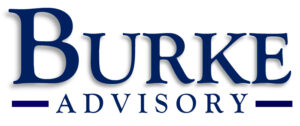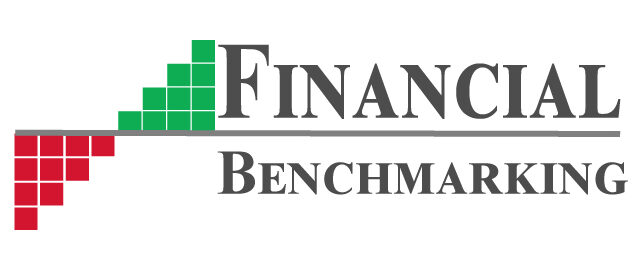
Typically, a business owner focuses on revenue growth, operations, and maybe expense control. The business owner who focuses on financial metrics and their marginal improvement seems to be the exception rather than the rule. Seemingly small adjustments to certain financial metrics within your business can potentially make huge improvements to your bottom line, cash flow and market value. This can be particularly important to an owner who is contemplating selling their business within the next few years. This is particularly timely given that we are beginning to see the largest transfer of wealth in history. Much of this is comprised of the transfer or sale of small to middle market businesses.
The many of the opportunities for financial improvement can be revealed through a process called “financial benchmarking”, particularly “same-industry benchmarking”. This principally involves identifying differences between the subject company, its peer group and industry best practices. That is to say companies of the same size, same industry, and perhaps the same geographic location or region.
This process can be an incredibly effective method to improve a company’s margins. Generally this involves analyzing and comparing specific expenses, optimum employees for your revenue size, costs and components of working capital including inventory. In one case, the subject company who was experiencing cash flow issues, was able to see over a million dollars of improvement in available cash just by making small changes to other components of working capital.
Every Company Can Benefit
When benchmarking it is also important to compare the subject company to its own prior periods. This is particularly valuable when some prior periods were very profitable. By looking at current and prior periods and comparing them to the same periods for the industry and best practice benchmarks, an analyst can derive significant insights into opportunities for improvement. This is true even for companies who may be experiencing financial difficulties due to an economic downturn, such as the one caused by the current pandemic. Remarkably, financial benchmarking can be particularly valuable for those companies. During the analysis, the analyst looks for gaps between the subject company’s results and industry best practices, among other things. Careful analysis can almost always reveal insights that may not be apparent by standard financial analysis alone.
Metrics That Make a Difference
The conclusions arrived at through an expert analysis will typically involve the metrics to be improved and instruction on how to improve those metrics. In other words, guidance for management. Once the analysis is complete and the opportunities are identified a road map to follow for financial improvement has basically been established. Some of the improvement may be easy to achieve. Others may require greater discipline. The subject company then has to focus its activities on closing those gaps, which may take several months.
Common-Sizing
For industry comparison benchmarking purposes, the financial statements are reduced to percentages of either gross sales/revenues or of total assets. This is called common sizing the financial statements. Common-sizing allows a better, apples-to-apples, comparison to the industry where differences or opportunities can be more readily seen.
Important Metrics
Scoring the analysis highlights certain critical ratios and metrics and how they compare to the industry and best practices. It may also explain the formula, meaning and importance of these ratios and metrics. Some typical metrics, but not by any means a complete list, include the following:
| RATIO | DEFINITION | HOW TO IMPROVE* |
| MARGIN RATIOS | ||
| Gross Margin | Gross Profit / Sales | Reduce costs, increase sales |
| Net Margin | Net Profit Before Taxes /Sales | Reduce costs, reduce expenses, increase sales |
| LIQUIDITY RATIOS | ||
| Current Ratio | Current Assets / Current Liabilities | Hold more cash, reduce payables |
| Quick Ratio | (Cash + AR)/Current Liabilities | Hold more cash, reduce payables |
| Working Capital | Current Asset-Current Liabilities | Hold more cash, reduce payables |
| TURNOVER RATIOS | ||
| Accounts Receivable Days | (Receivables/Sales) * 365 | Collect AR faster, Be aggressive |
| Accounts Payable Days | (Payables/Sales) * 365 | Pay bills as per terms, take discounts |
| Inventory Turnover | (Inventory/COGS) * 365 | Take accurate inventory, reduce inventory |
| Fixed Asset Turnover | Sales / Gross Fixed Assets | Improve efficiency and throughput. |
| DEBT & LEVERAGE RATIOS | ||
| Debt to Equity | Liabilities/Equity | Reduce debt, increase profit and equity |
| Interest Coverage | EBITDA/Interest Expense | Reduce debt, increase earnings |
| Debt Service Coverage | EBITDA/ (CPLTD + Interest Exp.) | Restructure debt, increase earnings |
| TYPICAL INDUSTRY SPECIFIC RATIOS | ||
| Sales/Employee | Sales/ FTE Employees | Increase sales, improve efficiency, reduce staff |
| Profit/Employee | Net Profit Before Taxes / FTE Employees | Increase sales, reduce costs & expenses, reduce staff |
| Sales Growth | (Current Period Sales – Prior Period Sales) / Prior Period Sales | Continuously expand customer base, focus on most profitable customers |
| Direct Labor/Sales | Direct Labor / Sales | Make production more efficient |
| Direct Materials/Sales | Direct Materials / Sales | Reduce waste and escapes |
| G & A Payroll / Sales | G & A Payroll / Sales | Make staff more efficient |
| Rent/Sales | Rent/Sales | Negotiate lower rent |
| Marketing/Sales | Marketing/Sales | Measure marketing effectiveness |
*Note: Steps to improve may vary according to the specific circumstances.
Avoid Pitfalls
When preparing a benchmark analysis, it is important to watch out for common pitfalls. The most significant of these pitfalls are as follows:
-
- Timeliness: it’s important to compare data from the same time periods. Since businesses and environmental influences change constantly, it’s also important that you have the most recent data possible. Annual benchmark analysis is seldom sufficient. A more appropriate regime is a quarterly review including performance scoring and competitive industry benchmarking.
- Accuracy: Benchmark data needs to be reliable. With that in mind, make sure the source of your data is trustworthy and has accurate information.
- Sameness: When comparing companies, it is important that we compare apples-to-apples. In other words, an auto parts electronics supplier is going to have different margins and requirements then an auto parts stampings supplier. Make sure the source of your data is relevant to the company you’re benchmarking. In other words, is it in the same geographic and economic marketplace as your target company? Are the company sizes similar? Are the time periods the same?
- Choose the right metrics: Ensure that the metrics you have chosen for your benchmark analysis are key to the performance of industry peers and that they accurately depict the true performance of the target within its industry.
- Read and Forget: Many managers may be tempted to simply review the results of a benchmark analysis, take note, and then just return to running the business as usual. This is a strategic mistake. If you want to be intentional about driving your business in the right direction, it is important that you not only take note of the variances between your business and the industry’s best practice benchmarks, but that serious strategic efforts are put into place to close the variances between your business’s metrics and those indicated as the industry’s best practices. Obtaining the variances is just the beginning.
Sources for Benchmark Data
Industry benchmark data can be found in several places including, but not limited to:
-
- Industry/Trade Associations
- Small Business Development Centers (SBA, SCORE, Economic Development Centers)
- Other Business Owners in the Same Business (best practices groups)
- Benchmark & Financial Assessment Services (typically the most robust and accurate)
Summary
The benefits of benchmarking are simple and powerful. By quantifying the gaps between your company’s key performance indicators (metrics) and those of your industry or financial best practices, you will essentially gain a clear map towards increased profits, cash flow and corporate value. Best of all, some of the work to close those gaps will be easy and relatively quick. Of course, some of the work will take longer and require more intentional planning. However, at the end of the day benchmarking is one of the very best ways to highlight opportunities and improve business performance.

August 8, 2021
Kevin Burke is a member of the Turnaround Management Association and a Certified Turnaround Professional. He is the owner of Burke Advisory and FinancialBenchmarking.com. A graduate of the Villanova School of Business, he has over 35 years of experience in banking and executive management. His management consulting practice is located in Troy, Michigan.

